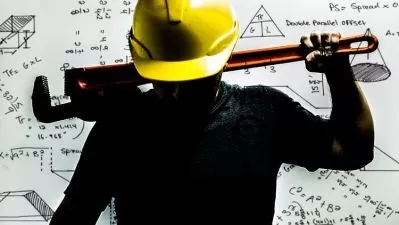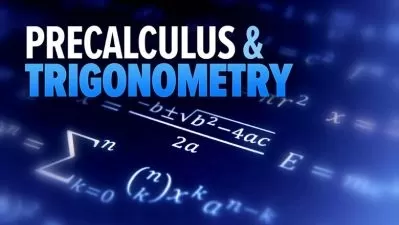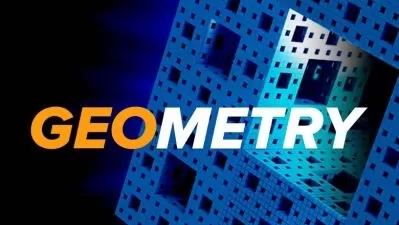Vectors, matrices, tensors and quaternions
Michael Burdett
3:08:42
Description
A course for the fundamental structures used in mathematics, engineering and physics.
What You'll Learn?
- Introduction to vectors, complex numbers, phasors, matrices and quaternions and their history.
- The core concepts of each of these structures, along with functions for using each one.
- Aspects of vectors such as normal vectors, 2D/3D planes, and vector fields.
- Multiple matrices including identity, triangular, rotation, inverse and transpose.
- Methods to convert between structures which can be converted, such as a quaternion to a matrix and visa versa.
- An introduction into kinematics, consisting of the big 4 functions.
- Velocities both longitudinal and along a curve.
- Knowledge of imaginary and complex numbers, along with their history.
- Multiple co-ordinate systems, how they relate to these structures.
- Calculus for vectors and matrices, including 3D surfaces.
- An introduction to Maxwell's equations, these being some of the most important functions for engineering and physics.
- Inertia, what it is, its basic functions, along with its matrix form and how to create an inertia matrix.
- Tensors, starting with their basics, working towards functions for using them, and contra and co-variant components.
Who is this for?
What You Need to Know?
More details
DescriptionThis course is for anyone who wants to learn the fundamental concepts/structures used throughout mathematics, engineering, physics, and some computer science. With or without an existing background in these subjects, this course will start at the basics of simple constructs (vectors), before working upwards into imaginary and complex numbers, phasors, matrices, tensors and lastly quaternions.
This course will teach you how each of these work, along with an introduction into Maxwell’s equations, gravity, and kinematics, which also use these concepts. As you progress through this course, you will see not only how they work, but how to use these structures, whilst gaining an understanding of how they are related to one another.
Spread across seventeen videos, this course is in English audio, available with subtitles in English, French, German, Hebrew, Icelandic, Romanian and Spanish.
The information within these courses is intended for information and educational purposes only. Multiple subjects covered in these courses require certifications to practice, whose governing bodies can vary from country to country. Completing these courses will not allow you to practice in a professional capacity, and these courses are intended for people who wish to learn these fields of study, and people who wish to refresh their knowledge on the subjects within these courses.
The subtitles in these courses were produced automatically. As they are automatically generated, please be aware that there may be grammatical errors and/or potential misunderstandings.
Who this course is for:
- Beginner, intermediate learners, and anyone interested in learning this subject. It is recommended but not necessary to have completed my course on Calculus before taking this course.
This course is for anyone who wants to learn the fundamental concepts/structures used throughout mathematics, engineering, physics, and some computer science. With or without an existing background in these subjects, this course will start at the basics of simple constructs (vectors), before working upwards into imaginary and complex numbers, phasors, matrices, tensors and lastly quaternions.
This course will teach you how each of these work, along with an introduction into Maxwell’s equations, gravity, and kinematics, which also use these concepts. As you progress through this course, you will see not only how they work, but how to use these structures, whilst gaining an understanding of how they are related to one another.
Spread across seventeen videos, this course is in English audio, available with subtitles in English, French, German, Hebrew, Icelandic, Romanian and Spanish.
The information within these courses is intended for information and educational purposes only. Multiple subjects covered in these courses require certifications to practice, whose governing bodies can vary from country to country. Completing these courses will not allow you to practice in a professional capacity, and these courses are intended for people who wish to learn these fields of study, and people who wish to refresh their knowledge on the subjects within these courses.
The subtitles in these courses were produced automatically. As they are automatically generated, please be aware that there may be grammatical errors and/or potential misunderstandings.
Who this course is for:
- Beginner, intermediate learners, and anyone interested in learning this subject. It is recommended but not necessary to have completed my course on Calculus before taking this course.
User Reviews
Rating
Michael Burdett
Instructor's Courses
Udemy
View courses Udemy- language english
- Training sessions 17
- duration 3:08:42
- Release Date 2023/09/13

















